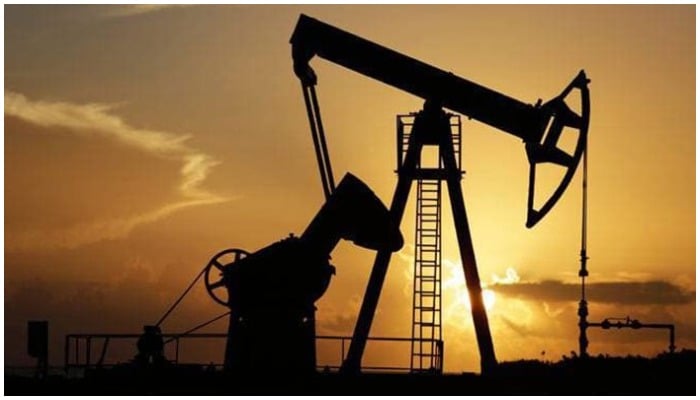Time to reduce dependence on gas and diversify
As local gas resources continue to deplete, cheaper supplies to keep decreasing due to failure in finding new gas for several decades
January 03, 2022

The gas crisis has been caused by continuously depleting local gas resources and rising LNG prices. Cheaper local gas supplies will continue to decrease due to the lack of any major success in finding new gas over the last several decades. Small discoveries have been made. It would be advisable to reduce dependence on gas and diversify into equivalents and substitutes. In this space, we will explore what can be done in this respect.
There are three classes of energy users: urban high income (UHI); low and middle-income urban and semi-urban residents; and low-income rural. The first group lives in posh areas with plot sizes of 500 sq yds or more. In some areas, the plot size has come down to 250 sq yds. There are high-rise posh apartment complexes as well. They can probably pay high or very high prices for energy which they are already doing under the present tariff system. The first group has many options. It can switch to electricity and LPG. It can install air-conditioners which provide both heating and cooling. It can install rooftop solar and water heaters. It can switch to electrical water heating. The current problem for this group is that they are significantly hooked on piped gas for cooking, heating and water heating. Geysers are gas guzzlers. During this crisis, many have shifted to other options. The issue is one of improving the availability of other options, logistics, supply chain systems and information. Both prices and non-price instruments (such as continued low supply and pressure) can be used to discourage this segment away from gas.
The real sufferers are those from low-income urban and semi-urban areas. This group’s typical income may be under Rs50,000-100,000. It lives in small houses and apartments in formal or katchi-abadis. A very large portion lives in semi-urban and rural areas expanding at a fast rate. It is a large and politically active population segment. They are mostly office workers, industrial workers and small traders. They practically have no option except for cheap electricity and gas, and can’t buy or afford LPG which is priced several times higher than their gas bill rates.
Most of the gas subsidy goes to this class and will continue to be so. Expansion is taking place in this group and new gas demand will also come from this sector – although there is a case for gradual enhancement of its low gas tariff, especially in the expensive LNG regime whose share is increasing by the day. This group may use biomass-efficient and clean stoves where living conditions permit. It can be a viable substitute for piped gas for this class as we shall discuss later. They (those earning Rs50,000 and above and living in small single or double-storey houses and portions) may also install one or two solar panels as well if there are credit schemes.
There are around 33 million households in Pakistan. It may be noted that only 25 percent of the population (around 10 million connections) gets piped gas due to limitations on network expansion. In contrast, there are 30 million domestic gas connections while 90 percent of the population has electricity connections. The rural population almost entirely depends on unorganised biomass in the form of tree trunks, shrubs etc. A small portion uses LPG, charcoal and kerosene. Rural areas do have a higher income class that can install solar facilities and have done so already. They will almost never get system piped gas both due to physical and investment reasons. Biogas and biomass-efficient stoves are their solutions.
The current choolaah practices are unhygienic and cause indoor and outdoor pollution. This system breeds chest diseases. And the use of uplahs is dirty and their continued handling manually by the rural women in this time and age should be shameful for society at large. Biomass collection on the other hand is time-consuming. Tree cutting causes deforestation as well as having an impact on the environment and climate change. In India, there is a system of LPG subsidy which is almost 50 percent of the normal price.
Lately, biomass-efficient stoves have been developed and deployed in many parts of the world with varying levels of success. These stoves do not produce smoke and are run on biomass pellets. They can also be used for improvised heating due to their non-smoking characteristics. Some market for this has already developed in Pakistan. However, these stoves are expensive – between Rs4000 and Rs7000. Pellets are being sold for Rs36 per kg; one kg per day may be sufficient for an average family.
An organised and government-supported programme may be able to bring down prices and improve affordability. A network of 100-200 biomass pellet-producing programmes may go a long way towards energy supplies for the 70 percent population of this country. A biomass plant costs around Rs2 million. It can generate substantial economic activity and employment in the rural economy, saving time and improving health conditions. Gas companies and traders can be used as delivery vehicles for a large biomass programme. Some portions of the urban poor living in semi-areas can also benefit from this. This can go a long way towards solving the energy problems of the poor.
Biogas has tremendous potential. It has been estimated that there is a potential for the production of some 600 mmcf of biogas. Pakistan is one of the largest milk producers and consumers in the world. There is a large milk and livestock sector contributing some 20 percent to the agricultural GDP. There are two types of biogas – raw and processed. Raw biogas contains some 50-60 percent methane and is good enough for domestic heating. It can be produced in smaller home plants and medium-sized community plants. Community plants can install small, distributed pipe systems as well.
Biogas can also be processed and cleaned to pipeline quality standards. In Germany and elsewhere it is being done already. There was a time when the EU had a target of supplying 20 percent of its gas requirement from biogas. The emergence of solar has diluted this target. In high-priced LNG times, biogas can add to energy security and help save foreign exchange. For price reasons, the CNG sector can be ideal for getting involved in this. They will become independent of piped gas and earn both from producing and selling the biogas. A government policy and programme may hasten the development of this market sector. Government-owned companies have launched an initiative in this respect. However, the momentum is lacking.
There is considerable potential for saving gas consumption in the water heating sector. Current gas geysers are gas guzzlers. Solar Water Heaters (SWH) can easily replace geysers. China and Turkey have installed millions of solar water heaters. Some markets have developed for SWHs which can be greatly expanded through a government policy and credit scheme. Local production can increase economic activity and save foreign exchange.
The power sector should gradually reduce gas consumption and rely more on alternatives like Thar coal and alternative energy. Two nuclear power plants, although expensive, have been installed. The already imported coal power plants should be converted wholly or partly on local Thar coal. There is almost a monopoly on Thar coal which should be diversified by induction of other private sectors which would help expand Thar coal to industrial sectors such as cement. The latter imports a large amount of coal exceeding $500 million per year. Coal gasification is another option worth pursuing under the CPEC programme.
The LPG market can be expanded through organised and unorganised imports from Iran and Central Asia. Border markets can be very helpful, some of which have been discussed lately in the context of helping Balochistan. The aforementioned steps can go a long way in reducing the intensity of the problem.
The writer is a former member of the Energy Planning Commission and author of ‘Pakistan’s Energy Issues: Success and Challenges’.
Originally published in The News









